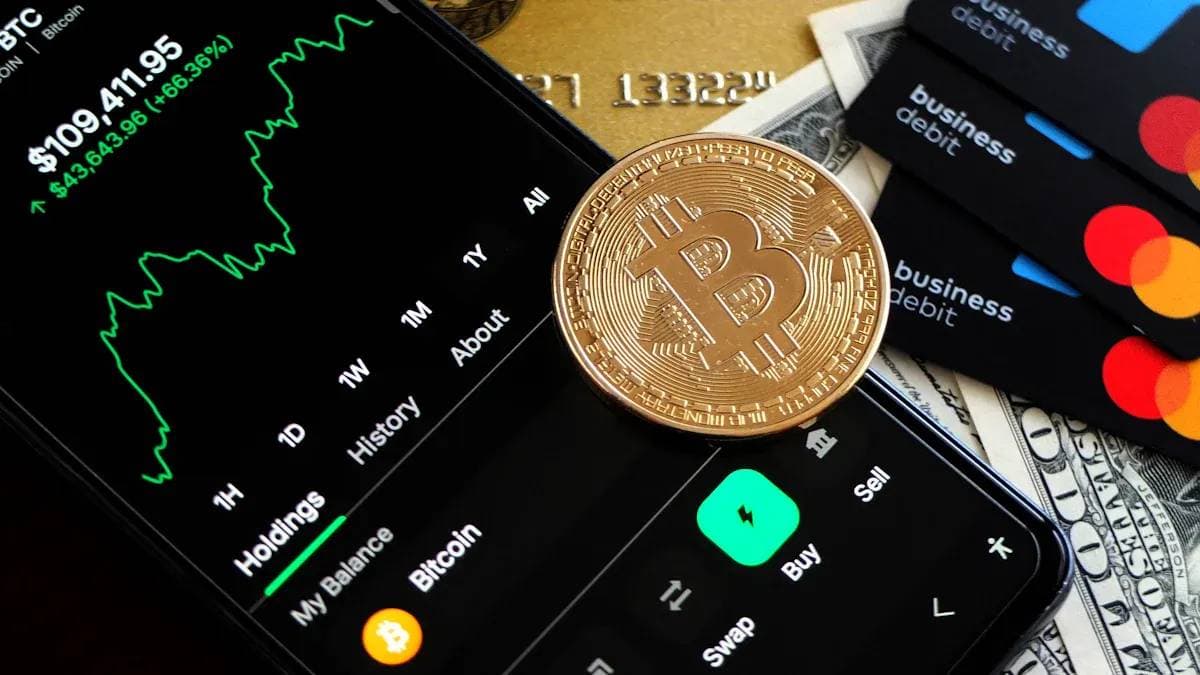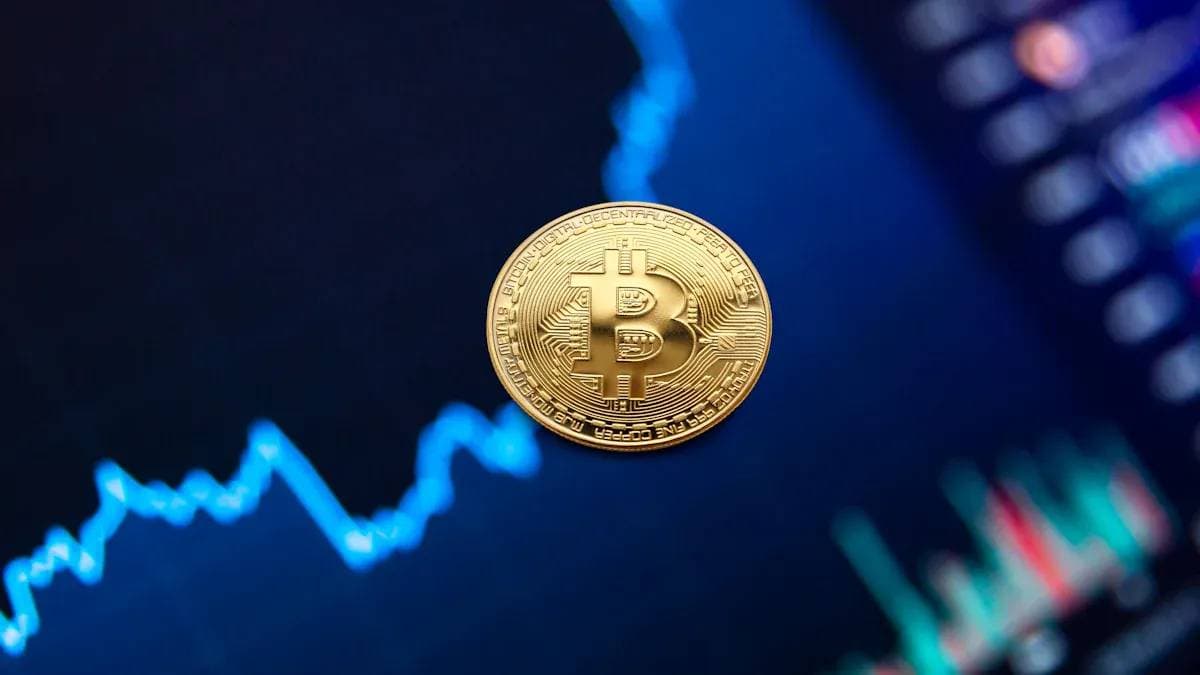- EasyCard
- Trade
- Help
- Announcement
- Academy
- SWIFT Code
- Iban Number
- Referral
- Customer Service
- Blog
- Creator
Stop Wasting Money: The Ultimate Enterprise Payment Cost-Saving Plan Is Here

Image Source: unsplash
Is your enterprise losing profits due to traditional payment methods? For companies involved in cross-border business, the answer is likely yes. Banks’ high fees and slow processes are eroding your earnings. We reveal an effective enterprise cost-saving plan that can significantly reduce expenses.
By conducting commercial payments through USDT, you can immediately save on cross-border remittance handling fees and currency exchange losses. Fund in-transit time is also shortened from days to minutes. These saved costs will directly convert into your company profits.
Key Points
- Using USDT payments can significantly reduce cross-border remittance fees, over 95% cheaper than traditional banks.
- USDT is pegged to the USD, avoiding currency exchange losses and making enterprise profits more stable.
- USDT transfers are fast, with funds arriving almost instantly, improving enterprise cash flow efficiency.
- Enterprises should choose secure wallets that support multi-signature and acquire USDT through compliant platforms.
- When using USDT payments, be sure to carefully verify the recipient address and network type to avoid fund loss.
Cost and Efficiency Advantages of USDT Payments

Image Source: unsplash
The cost and inefficiency of traditional payment methods are directly cutting your profits. Now, let’s deeply analyze how USDT provides you with a superior solution through three core advantages.
Reduce Cross-Border Remittance Handling Fees
Every time you conduct a cross-border wire transfer, you are paying fees far beyond imagination. Traditional banks’ charging models usually include multiple parts:
- Sending Bank Handling Fee: Usually a fixed fee, for example $35 to $75.
- Intermediary Bank Handling Fees: Before funds reach the final recipient bank, they may pass through one or more banks, each charging a transit fee. This fee is usually between $20 to $100, and often hidden in the total, not easily noticeable.
- Receiving Bank Handling Fees: Some banks also charge fees for received remittances.
Case Analysis: A $100,000 Remittance
Suppose you pay $100,000 to a U.S. supplier through a licensed Hong Kong bank. Your total fees may include $50 sending fee and $20 intermediary bank fee, totaling $70. This fee seems small, but frequent transactions over a year accumulate into a huge expense.
Now, compare with using USDT payments. The cost of USDT transfers is only the blockchain network’s “Gas fee”. This fee depends on the network you choose, not the transfer amount size.
As shown in the figure above, fees vary greatly across networks. Choosing the efficient TRC-20 network, your transfer cost is usually less than $2.
| Payment Method | Fee Composition | $100,000 Remittance Cost Estimate |
|---|---|---|
| Traditional Bank Wire Transfer | Sending Fee + Intermediary Bank Fee | $50 - $100+ |
| USDT (TRC-20) | Network Gas Fee | $0.3 - $2 |
The conclusion is obvious. Through USDT payments, you can reduce single cross-border payment costs by over 95%. This is what we call the ultimate enterprise cost-saving plan, directly converting unnecessary bank fees into your profits.
Avoid Currency Exchange Losses
In addition to visible handling fees, traditional cross-border payments have a hidden cost: currency exchange losses. Banks’ provided exchange rates are usually not real-time market rates; they set a spread between buy and sell prices to profit. When your business involves multiple fiat currencies, every exchange unknowingly erodes your funds.
USDT solves this problem for you. As a stablecoin pegged 1:1 to the USD, it provides USD stability. This means:
- Stable Value: You can receive and hold USDT payments without worrying about value shrinkage due to market fluctuations.
- Lock in Profits: When trading with global suppliers or customers, you can use a unified USD-pegged unit for pricing and settlement, eliminating exchange rate fluctuations’ impact on profit margins.
This makes your financial planning simpler and more predictable. You no longer need to constantly monitor exchange rates or pay extra costs to hedge exchange rate risks.
Achieve Minute-Level Fund Arrival
Time is money, a phrase vividly embodied in the business world. Traditional international wire transfers usually take 1 to 5 business days. During these days, your funds are “in transit” and cannot be used. This delay brings a series of problems:
- Cash Flow Strain: Slower fund turnover affects paying employee salaries, purchasing raw materials, or reinvesting.
- Missed Business Opportunities: When you find a time-limited offer (such as supplier early payment discounts) or need quick restocking, slow fund arrival may cause you to miss opportunities.
USDT payments elevate fund efficiency to a new level.
Speed Comparison
- Traditional Wire Transfer: 1 - 5 business days
- USDT (TRC-20 Network): Less than 1 minute
Minute-level arrival means your funds are almost instantly usable. This agility brings huge competitive advantages to your enterprise. You can immediately use received payments for operations, seize every business opportunity requiring quick decisions, making enterprise operations smooth as silk, no longer constrained by slow financial systems.
Ultimate Enterprise Cost-Saving Plan: USDT Payment Practical Guide

Image Source: pexels
After understanding USDT advantages, the next step is applying it to your actual business. This guide provides you with a clear, executable roadmap to get started easily. This is not just theory; it is a directly operable enterprise cost-saving plan.
Step 1: Acquire USDT and Establish Enterprise Wallet
Before starting payments, you need to complete two key preparations: establish a secure enterprise-level wallet and acquire USDT through compliant channels.
1. Choose and Establish Your Enterprise Wallet
The wallet is the portal for managing your digital assets, with security as the primary consideration. For enterprises, never use personal wallets for company funds. You need a wallet designed for business scenarios with strong security features and team collaboration capabilities.
Core Security Feature:Multi-Signature (Multi-Signature)
Multi-signature wallets require a transaction to be jointly approved by multiple managers (private key holders) to be sent. For example, you can set a rule requiring at least two approvals from the finance manager and CEO for funds to be transferred. This greatly reduces risks of fund loss due to single points of failure (such as employee errors or device theft) or internal fraud.
There are various wallets on the market, including beginner-friendly Trust Wallet and Exodus, with user-friendly interfaces supporting multiple assets. However, for enterprises pursuing higher security and management efficiency, solutions like Biyapay designed for enterprises are recommended.
| Wallet Type | Applicable Scenarios | Advantages | Disadvantages |
|---|---|---|---|
| Personal Software Wallet | Personal use, small transactions | Simple operation, free | Lower security, not suitable for team collaboration |
| Hardware Wallet | Long-term, large asset storage | Extremely high security (private key offline) | Relatively cumbersome operation, inconvenient for high-frequency payments |
| Enterprise-Level Wallet (such as Biyapay) | Company daily operations and payments | Multi-signature, permission management, operation logs, team collaboration | Usually paid service |
Platforms like Biyapay combine non-custodial wallet security with enterprise-level management functions, allowing you full asset control while setting fine-grained internal approval processes.
2. Acquire USDT Through Compliant Channels
The most common way to acquire USDT is purchasing with fiat currency (such as USD). You need to choose a regulated trading platform supporting enterprise accounts. Well-known exchanges like Kraken provide reliable services, but the process may be cumbersome.
A more efficient choice is using payment platforms like Biyapay with integrated fiat on/off-ramp functions. These platforms serve enterprise customers with smoother processes.
During account opening, you need to complete "Know Your Business" (KYB) verification. This is similar to personal KYC (Know Your Customer) but reviews your entire company. Preparing the following materials can significantly speed up approval:
- Company Registration Documents: For example, company registration certificate, business registration certificate.
- Ownership Structure Proof: Documents clearly showing company shareholders and ultimate beneficial owners (UBO).
- Key Management Personnel Information: Identity proof documents for directors and executives.
- Company Address Proof: For example, recent bank statements or utility bills.
The platform verifies your enterprise information through official databases and conducts risk assessment to ensure all operations comply with anti-money laundering (AML) regulations. Although rigorous, this is necessary to protect your fund security and transaction compliance.
Step 2: Execute Payment Operations
Once you have USDT in your wallet, you can start paying global suppliers or partners. The entire process is as simple as sending an email, but several key details must be noted.
We will use Biyapay’s operation interface as an example to demonstrate a standard payment process:
- Log In and Select Payment Function: Enter your enterprise wallet dashboard and find the “Send” or “Transfer” function.
- Enter Recipient Address: This is the most critical step. You need to obtain the USDT receiving address from your recipient.
- Verify Network Type: USDT exists on multiple blockchain networks, most commonly TRC-20 and ERC-20. You must confirm with the recipient which network they use and select exactly the same network.
⚠️ Important Tip: Wrong network selection will cause permanent fund loss!
- TRC-20 Address usually starts with
T(for example:T7z5Tf9jj1k2a4VZqL4mKjD6CZ1ePZa1w6). - ERC-20 Address usually starts with
0x(for example:0x8d6aF11538f4C48E7d10c7E9B2F46aD0F3b4a03C).
Before transfer, repeatedly confirm address and network type with the counterparty. It is recommended to conduct a small-amount (for example $5) test transfer, confirm success before large payments.
- TRC-20 Address usually starts with
- Enter Payment Amount: Enter the USDT quantity you want to pay.
- Confirm and Authorize Transaction: The system displays transaction details, including recipient address, amount, and network Gas fee. In enterprise wallets like Biyapay, this step may require entering payment password and waiting for other team members’ approval based on preset “multi-signature” rules.
- Complete Payment: Once the transaction is confirmed on the blockchain (usually within 1 minute), the payment is complete. You can query all public information of this transfer on a blockchain explorer via transaction ID (TxID).
Step 3: Accounting Processing and Recording
After using USDT payments, standardized accounting processing is key to ensuring clear and compliant company finances. This is not only for internal management but also to handle possible future audit requirements. Integrating cryptocurrency transactions into existing accounting processes is the final link in this enterprise cost-saving plan.
Here are several best practices:
- Set Up Dedicated Accounting Subjects: In your accounting software, create new subjects for digital assets. For example:
1005 - Digital Assets: USDT(as cash equivalent or current asset)6010 - Blockchain Transaction Fee (Gas Fee)(as operating expense)
- Clearly Mark Every Transaction: Do not just record a total. Every USDT transaction should be detailed like traditional bank statements.
- Automated Accounting: Manual recording is error-prone and inefficient. Use professional cryptocurrency accounting software that automatically syncs all wallet and exchange transaction data and classifies according to your rules.
A clear accounting example is as follows:
| Date | Transaction Type | Counterparty | Expense (USDT) | Fee (USDT) | Accounting Subject | Remarks |
|---|---|---|---|---|---|---|
| 2024-10-26 | Payment for Goods | ABC Supplies | 10,000.00 | 1.20 | Accounts Payable / Inventory | Purchase Order #PO-2024-101 |
| 2024-10-27 | Payment for Services | Freelancer John | 500.00 | 1.15 | Consulting Service Fee | Payment for design services |
In this way, your financial statements accurately reflect the company’s asset status and operating activities, making USDT payments truly seamlessly integrate into your enterprise operations.
Safe Use of USDT: Essential Risk Management Knowledge
Integrating USDT into your enterprise payment process brings significant cost and efficiency advantages. However, to enjoy these benefits long-term and safely, you must establish a sound risk management framework. This not only protects your funds but ensures your business remains compliant.
Prevent Operational Errors and Fund Theft
In the digital asset world, security is your first line of defense. Private key leakage means permanent asset loss, with consequences far more severe than traditional bank account password theft. According to statistics, over 40% of cryptocurrency theft incidents in 2024 originated from private key leakage.
You must be vigilant against the following common threats:
- Phishing: Attackers create fake websites or emails imitating legitimate wallets or exchanges to trick you into entering private keys or seed phrases.
- Social Engineering: Scammers may impersonate customer service or partners to gain your trust through communication and steal sensitive information.
- Malware: Infected devices may record your keystrokes or steal locally stored wallet files.
Enterprise-Level Security Best Practices
- Enable Multi-Signature (Multi-Signature): This is the core of enterprise security. Use wallets like BitGo or Biyapay that support multi-sig, requiring joint approval from multiple managers to transfer funds, effectively preventing single points of failure and internal fraud.
- Use Hardware Wallets: Store private keys in offline hardware devices, physically isolating them from the internet, greatly reducing online hacking risks.
- Secure Backup Seed Phrases: Etch seed phrases on metal plates and store in multiple secure locations like fireproof safes or bank vaults. Never screenshot or store in the cloud.
Identify and Respond to Compliance Risks
Using USDT does not mean bypassing regulation. Major global economies are establishing clear crypto asset regulatory frameworks. For example, the EU has passed the Markets in Crypto-Assets Regulation (MiCA) and a series of anti-money laundering directives (AML), imposing clear compliance requirements on crypto asset service providers.
You need to proactively take measures to ensure business complies with anti-money laundering (AML) and counter-terrorism financing (CFT) regulations.
| Compliance Tool | Function Description |
|---|---|
| Wallet Address Screening | Before transactions, use blockchain analysis tools to scan counterparty addresses, ensuring they are not on sanction lists from institutions like U.S. OFAC. |
| Transaction Monitoring | Real-time monitor fund flows, automatically identify transactions from high-risk addresses or involving illegal activities, and alert or block. |
Additionally, remember that commercial transactions using USDT have tax implications. In the U.S., receiving USDT as payment is considered ordinary income; using USDT to pay suppliers may generate capital gains or losses. Standardized accounting and timely reporting are crucial.
Manage Stablecoin Price Fluctuation Risks
USDT maintains its 1:1 peg with USD by holding USD reserves. However, under extreme market conditions, it has experienced brief, slight price deviations (de-pegging). Although rare and usually quick to recover, you still need to prepare for this low-probability event.
Risk Mitigation Strategies
- Diversified Holdings: Do not put all liquidity in one stablecoin. Consider holding other regulated stablecoins like USDC to diversify risk.
- Real-Time Monitoring: Monitor USDT price and trading volume. If abnormal fluctuations are found, pause large transactions and wait for market stability.
- Develop Contingency Plans: Set a risk exposure limit, clearly defining under what circumstances to exchange USDT for fiat to lock in profits and principal.
By implementing these risk management measures, you can confidently leverage USDT payment advantages while minimizing potential risks.
USDT payments are not just a cost-saving tool but a strategic choice to enhance global competitiveness. It simplifies complex cross-border finance to a few clicks, maximizing fund efficiency. As the stablecoin market is expected to handle trillions of USD in payments, acting now is seizing the future.
Do not hesitate anymore. Take action immediately to start your enterprise cost-saving plan. Follow our guide, starting with a test wallet and a small supplier invoice pilot. Many e-commerce and freelancers have reduced transaction costs to below 1% and achieved instant settlement through this.
FAQ
Is It Compliant for Enterprises to Use USDT Payments?
The compliance of USDT payments depends on the jurisdiction where your company is located. You need to consult legal professionals to understand specific local regulations. This ensures your commercial activities are fully compliant, avoiding potential legal risks.
What If USDT Price Is No Longer Stable?
USDT aims to peg 1:1 with USD, but short-term price deviations may still occur. You can manage risk by diversifying holdings in multiple compliant stablecoins (such as USDC). At the same time, avoid holding large amounts of USDT for long periods, exchanging to fiat in a timely manner.
How Should Companies Handle Tax Issues for USDT Transactions?
You should treat USDT transactions as regular financial activities. Accurately record every income and expense and include them in the company accounting system. Since tax policies vary by region, consult accountants familiar with digital assets to ensure compliant reporting.
Is the Process for Companies to Start Using USDT Complicated?
The startup process is simpler than you imagine. The core steps are choosing a secure enterprise-level wallet and compliant trading platform. Following the practical guide provided in this article, you can smoothly complete initial setup and start enjoying the convenience it brings.
*This article is provided for general information purposes and does not constitute legal, tax or other professional advice from BiyaPay or its subsidiaries and its affiliates, and it is not intended as a substitute for obtaining advice from a financial advisor or any other professional.
We make no representations, warranties or warranties, express or implied, as to the accuracy, completeness or timeliness of the contents of this publication.




Contact Us
Company and Team
BiyaPay Products
Customer Services
BIYA GLOBAL LLC is a licensed entity registered with the U.S. Securities and Exchange Commission (SEC No.: 802-127417); a certified member of the Financial Industry Regulatory Authority (FINRA) (Central Registration Depository CRD No.: 325027); regulated by the Financial Industry Regulatory Authority (FINRA) and the U.S. Securities and Exchange Commission (SEC).
BIYA GLOBAL LLC is registered with the Financial Crimes Enforcement Network (FinCEN), an agency under the U.S. Department of the Treasury, as a Money Services Business (MSB), with registration number 31000218637349, and regulated by the Financial Crimes Enforcement Network (FinCEN).
BIYA GLOBAL LIMITED is a registered Financial Service Provider (FSP) in New Zealand, with registration number FSP1007221, and is also a registered member of the Financial Services Complaints Limited (FSCL), an independent dispute resolution scheme in New Zealand.




















